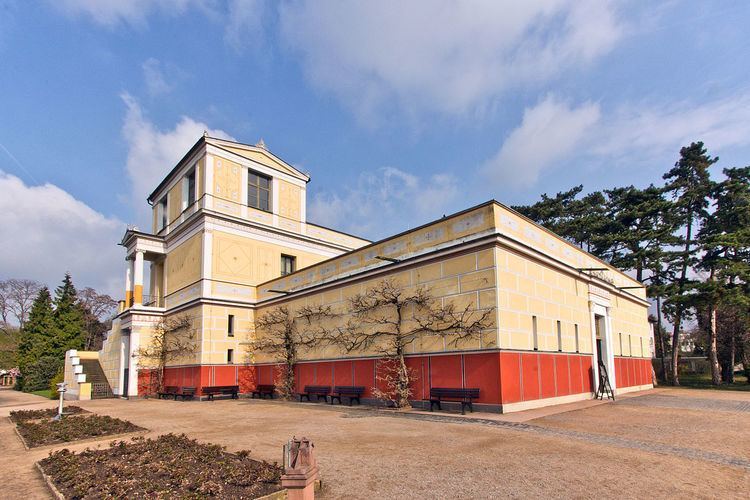Alternative names Pompeiianum Construction started 1840 Opened 1848 | Architectural style Roman Completed 1848 Phone +49 6021 218012 | |
 | ||
Hours Closed now Thursday9AM–6PMFriday9AM–6PMSaturday9AM–6PMSunday9AM–6PMMondayClosedTuesday9AM–6PMWednesday9AM–6PMSuggest an edit Similar Schloss Johannisburg, Schönbusch, Basilica of SS Peter and Alex, Schöntal, Stiftsmuseum der Stadt Aschaffenburg | ||
5597 geb ude br pompejanum aschaffenburg mediterranes flair am bayerischen untermain
The Pompejanum (or Pompeiianum) is an idealised replica of a Roman villa, located on the high banks of the river Main in Aschaffenburg, Bavaria, Germany. It was commissioned by King Ludwig I and built in the 1840s.
Contents
- 5597 geb ude br pompejanum aschaffenburg mediterranes flair am bayerischen untermain
- Pompejanum
- Location
- History
- Today
- References
Pompejanum
Location
The Pompejanum is situated on the high bank of the river Main in the city of Aschaffenburg, in the Lower Franconia region of Bavaria. It is located within sight of Schloss Johannisburg. The Pompejanum is surrounded by a small mediterranean garden, first created in the 19th century when the building was constructed.
History
The Pompejanum was commissioned by King Ludwig I and built in the years 1840-1848 according to the plans of the court architect Friedrich von Gärtner. The Pompejanum was not intended as a royal villa, but as a demonstration that would allow art lovers in Germany to study ancient culture. The building is a symbol for the enthusiasm for antiquity in the 19th century.
The villa is a replica of a domus (or town house) in ancient Pompeii, the so-called House of Castor and Pollux (Casa dei Dioscuri), so named after a wall drawing, which was found in the entrance area of the ruined building.
During World War II the Pompejanum was heavily damaged and restored in phases beginning in 1960.
Today
Since 1994, the Pompejanum houses original Roman art works from the collections of the Staatliche Antikensammlungen and the Glyptothek in Munich. The building also hosts temporary exhibitions.
